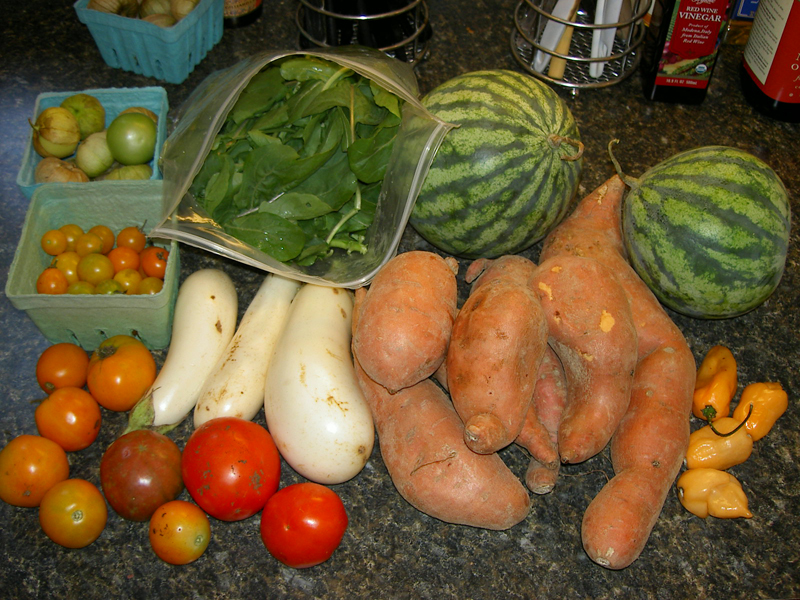
Rear: tomatillos, arugula, and watermelons. Front: tomatoes, eggplants, sweet potatoes, and ‘Peachy Mama’ peppers.
Today I picked up the last box of our summer farm subscription (one of the food sources described in an article co-written by our neighborhood drop-off coordinator). This week’s box was one of the most bountiful of the summer, and more representative of what our winter boxes were like. With the drought that hit Maryland earlier this summer, the summer subscription didn’t match our experience in the winter. Even with the intellectual knowledge that low returns were due to crop failure, and the consolation that everyone we knew with a CSA was experiencing the same thing, it was a bit disappointing. We were quite glad that we’d experienced the winter subscription first, as we likely wouldn’t continue after this year’s admittedly unusual experience. However, we did experience the winter subscription first, and having done so we’ll likely give next year’s summer subscription another try to see what a non-fluke-low-year is like.
For now — and by ‘now’ I mean the six weeks until our winter subscription picks up — we’ll rely on the farmers’ markets to supply us with our fresh food (once we eat all that stuff from our box, that is). Because we don’t have a car, we aren’t able to get to the market where our farmer brings his produce, but there are several other small and local farmers to support at the markets we can get to by foot or bike or train (or some combination thereof).
With the apples in season, I’ll be making sure not to miss my weekly trip, even if we do have eggplants, watermelons and sweet potatoes coming out our wazoos. I won’t be making as many pies this year, with our cholesterol-busting plan in full swing, but I can’t wait to get my annual fix of crispy tart Braeburns. I’ve sworn off grocery store apples this year, for reasons of cost and perpetually disappointing taste, so these will be the first we’ve had in a long time. With a little luck, I won’t have to go all the way in to the Dupont Circle market downtown to find apples that are minimally sprayed.
Maybe it’s a function of growing up in food farming regions, but I didn’t realize until recently that my approach to eating had become something of a ‘movement’ and that there was a cute phrase attached to the idea that it’s always best, economically as well as gastronomically, to buy your food directly from the person who grows it. Or, at an even more basic level, that food is grown not manufactured, and the quicker it gets to you, the fresher it is. Food coops, local organic stores, and farmers’ markets have been the mainstays of my food supply for over 10 years now, since my post-college days of belonging to the coop around the corner from my house in West Philly. It’s still a little odd to find myself part of a way of living that now has regular publications and gets national press.
But, you know, really: as long as I can eat what I like and walk to get it, I’m happy.







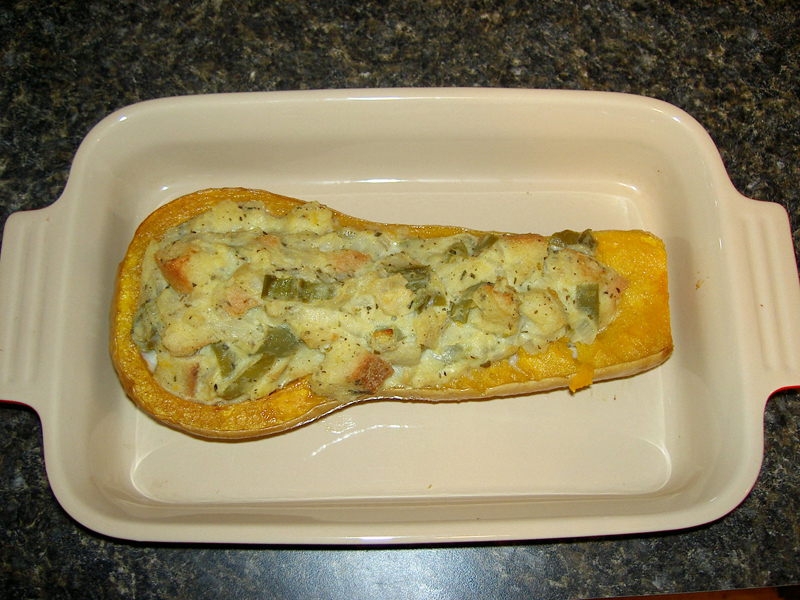


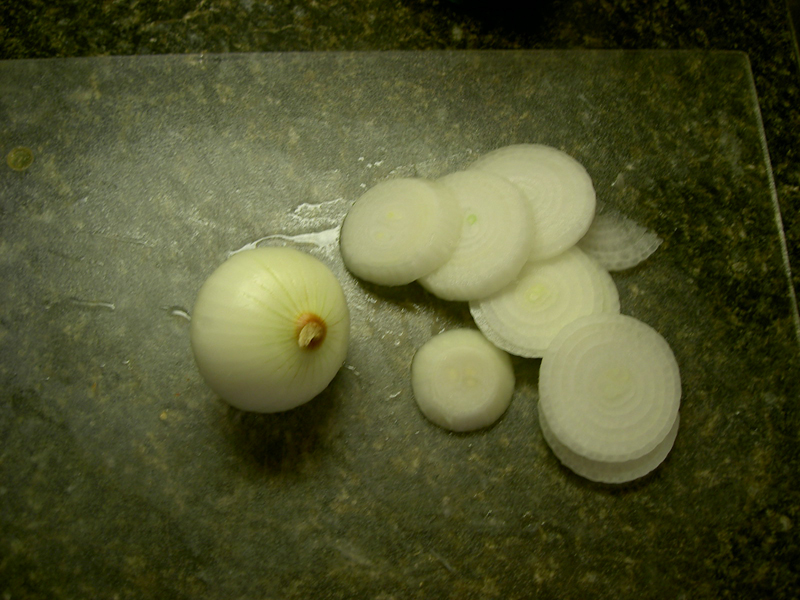
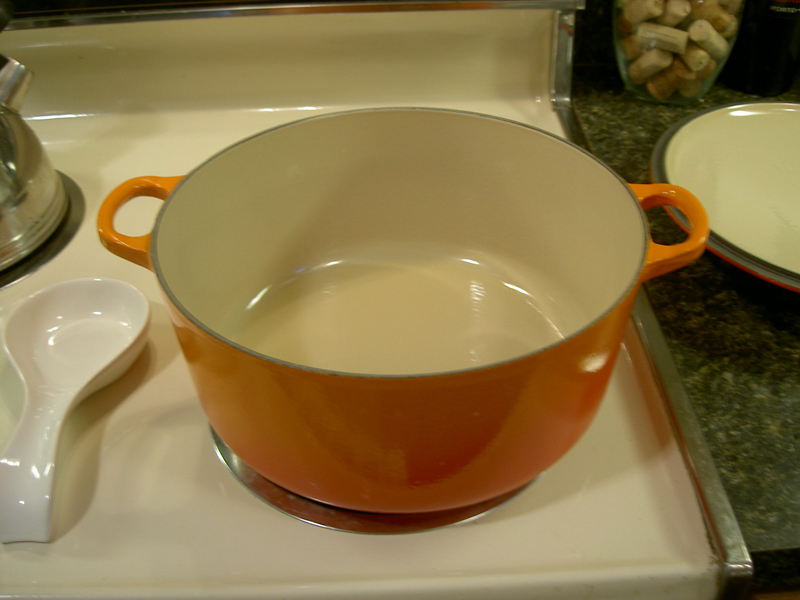
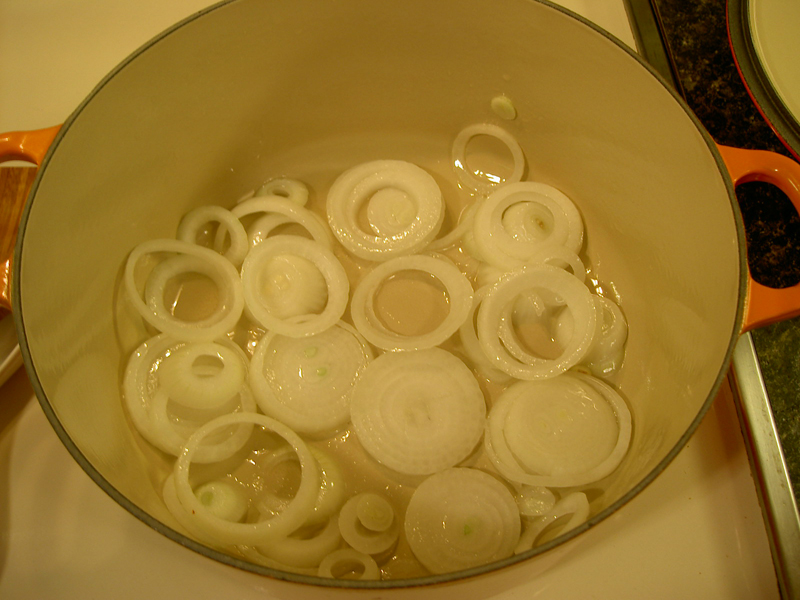

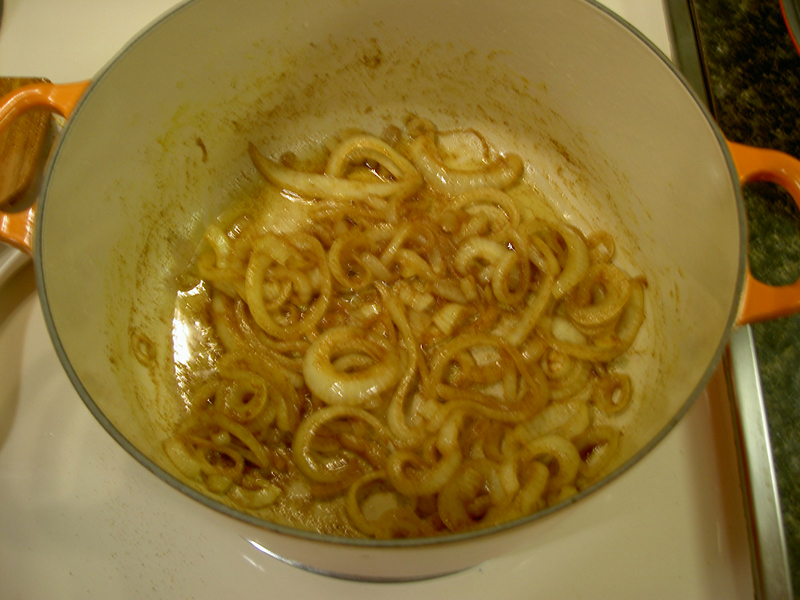
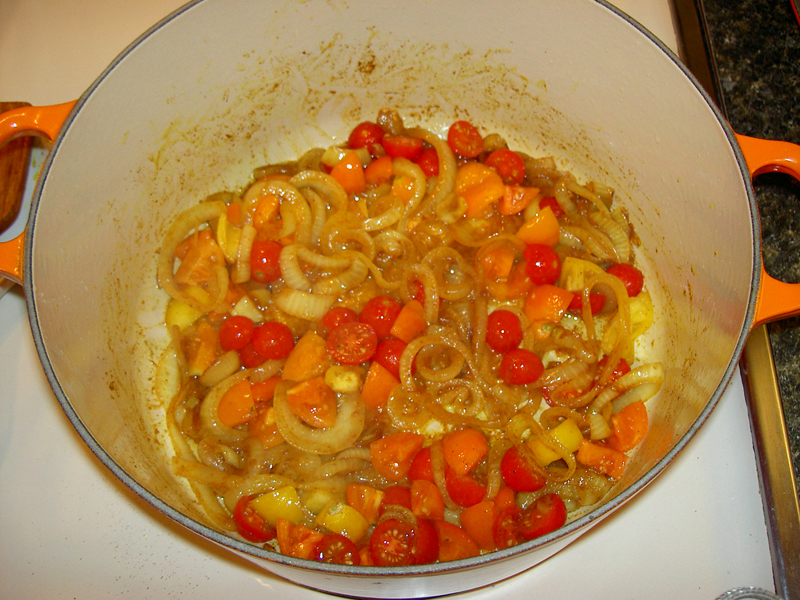
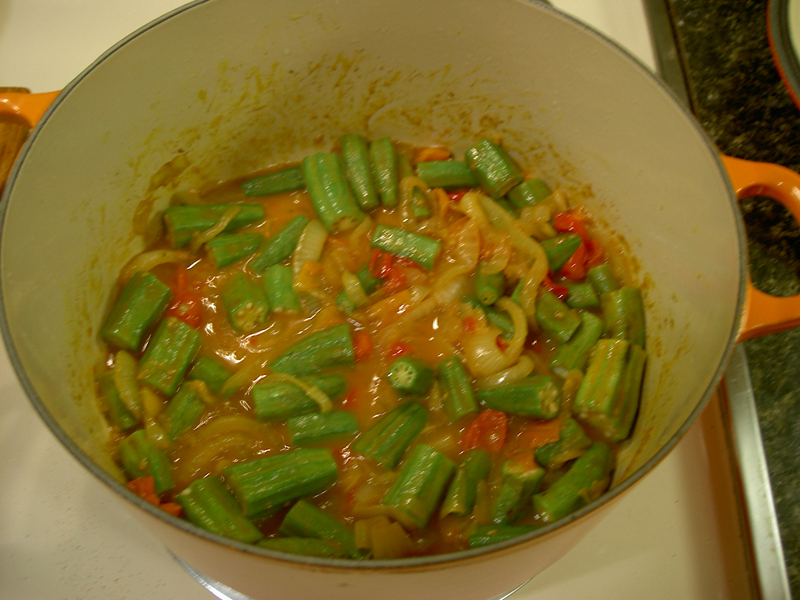
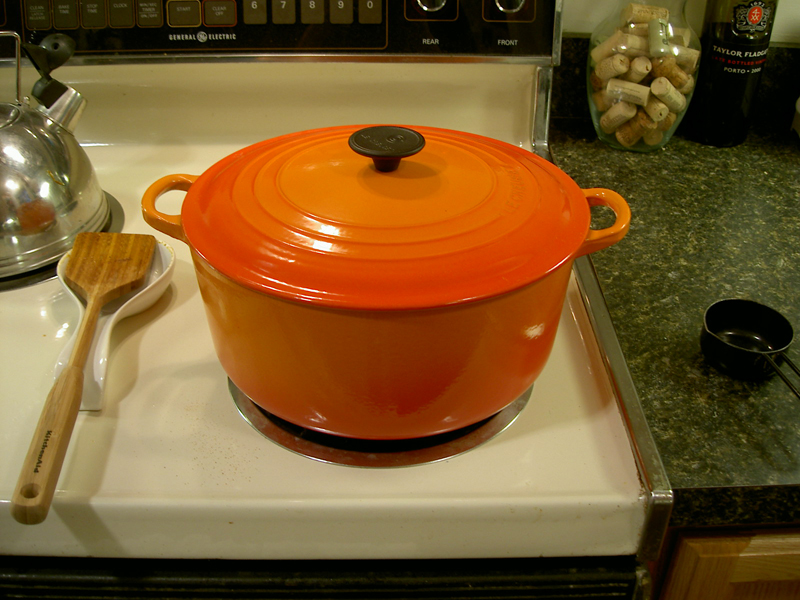 Everything steaming.
Everything steaming.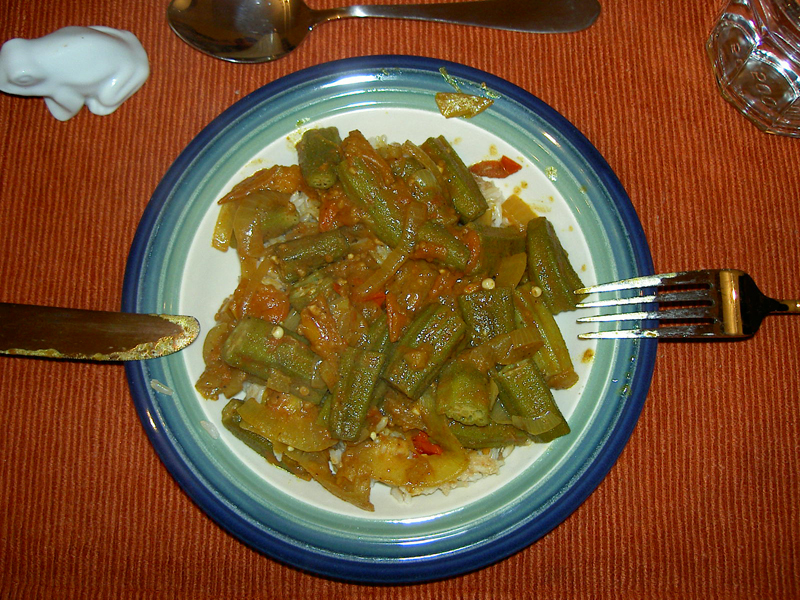 Dinner.
Dinner.